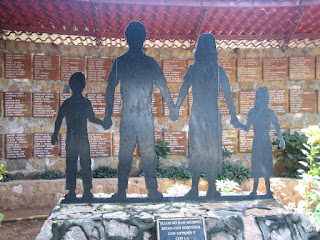The witnesses of El Mozote
Thirty eight years ago today Salvadoran military troops moved on the area of El Mozote and surrounding hamlets in the department of Morazan in northeast El Salvador. Over the next few days, with savage brutality, they would slaughter almost 1000 civilians, including more than 400 children under the age of 12, the worst massacre in the history of Latin America.
For many years in the English language press, only one witness to the massacre was referred to by name, Rufina Amaya. She was often described as the sole survivor, although there were others, but she told the story to the world for decades, including how she heard the screams of her children being murdered. Rufina passed away in 2007.
Today, a major human rights trial proceeds on a slow and steady pace in a courtroom in northeastern El Salvador. The trial has now brought us the testimony of other witnesses, primarily from the other hamlets surrounding El Mozote, who testify either to the killing, to the events leading up to the massacre or its immediate aftermath.
Those witnesses have spoken of the unimaginable loss of family members, witnesses like Don Eduardo Concepción Argueta Márquez, now more than 90 years old, who lost his wife, two sons, a grandchild, uncle and cousin in the massacre. He returned to El Mozote 15 days after the massacre to find piles of corpses. He had missed being killed by the happenstance of being in a neighboring town when the Salvadoran troops advanced towards El Mozote.
Antonio Pereira, had no other choice than to remain hidden, without any ability to stop what was happening, as he watched soldiers kill his wife, son and daughter in Los Toriles. He managed to bury them before fleeing the village where he had lived all his life.
Some recordings of trial testimony of the witnesses, and other reporting about the massacre in El Mozote and surrounding hamlets, is captured in this special section at RevistaFactum.
Earlier this month, the online periodical El Faro released a multi-media presentation of interviews of some of these witnesses to the massacre recorded in the countryside where the events took place. Included in the El Faro presentation is this 30 minute documentary:
The testimonies of these witnesses help create an historical record of events which must never be forgotten.

Comments